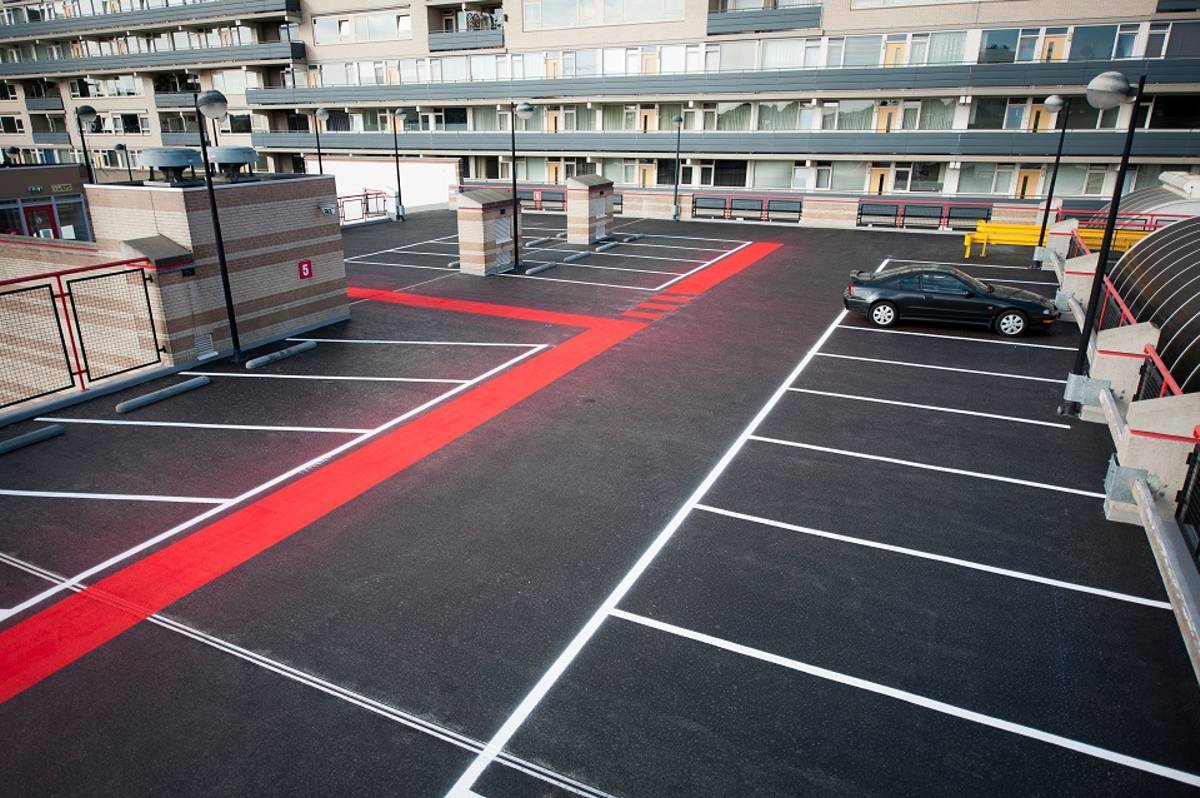The Key to Car Park Structural Protection and Surface Longevity
Liquid waterproofing can offer a durable protective and surfacing option for high-volume locations such as car parks, but achieving a long-lasting finish is all about the preparation. If the substrate is not properly assessed and prepared correctly, this can lead to issues and potential liabilities further down the line.
Here, Mehrdad Paykazadi, Global Liquid Waterproofing Manager from SOPREMA gives a guide to the proper pre and post-installation care, to ensure a high-quality finish that will meet warranty requirements.
The specification of car park surfacing, or car park waterproofing, is important. It potentially adds to a building’s value and income opportunity, minimises car park maintenance and, most importantly, creates a positive and safe experience for drivers and their vehicles.
Whether it’s a new residential development car park surface, a public multi-storey car park renovation or similar, there are several factors to consider for an effective, safe and durable surface that performs within warranty.
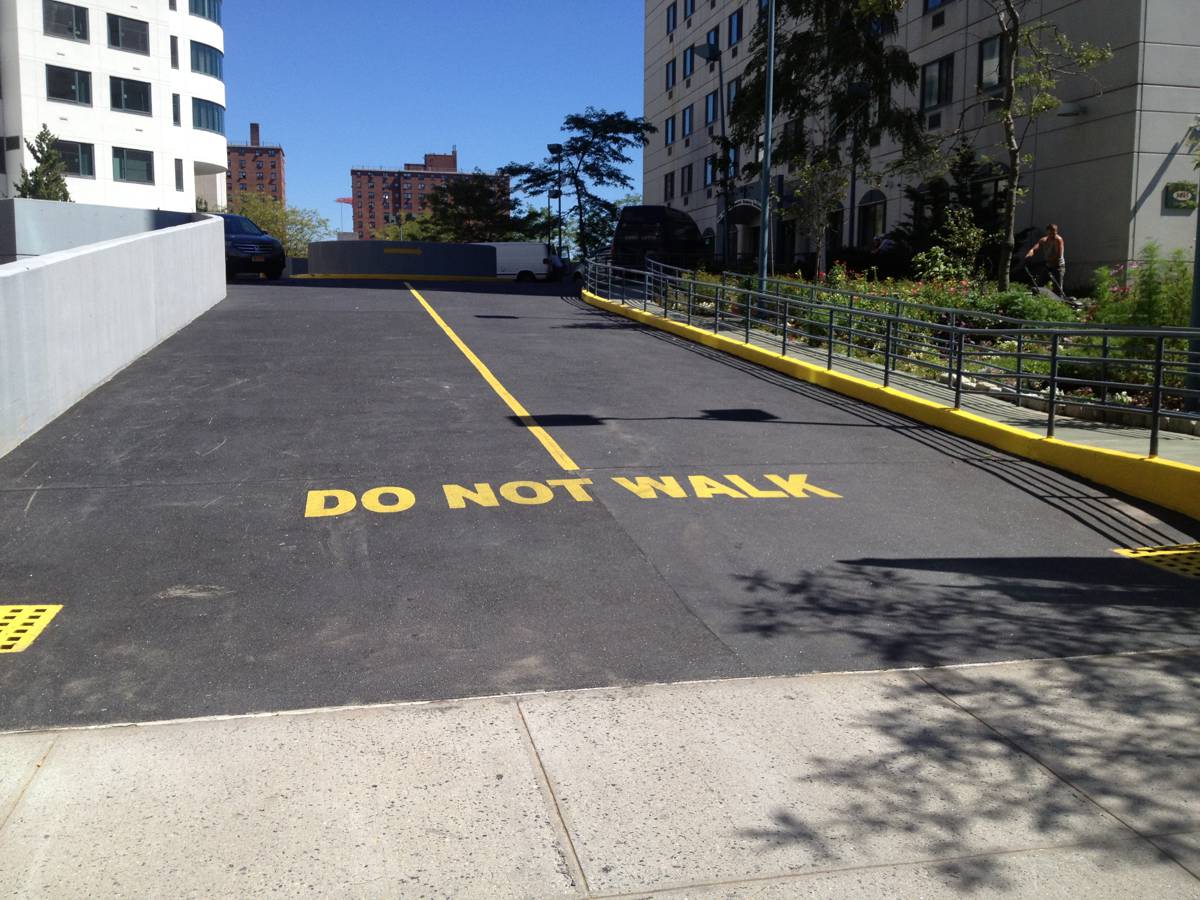
What is liquid waterproofing?
SOPREMA’s liquid waterproofing solution is a dual-component resin composed of polymethyl methacrylate (PMMA) that is cold applied and is flame-free. It can be poured and applied with a roller or sprayed on, eliminating the need for any heat. Its name suggests it’s solely for waterproofing purposes, however, the technology has multiple uses, including serving as a trafficable surface sealer and finish coat.
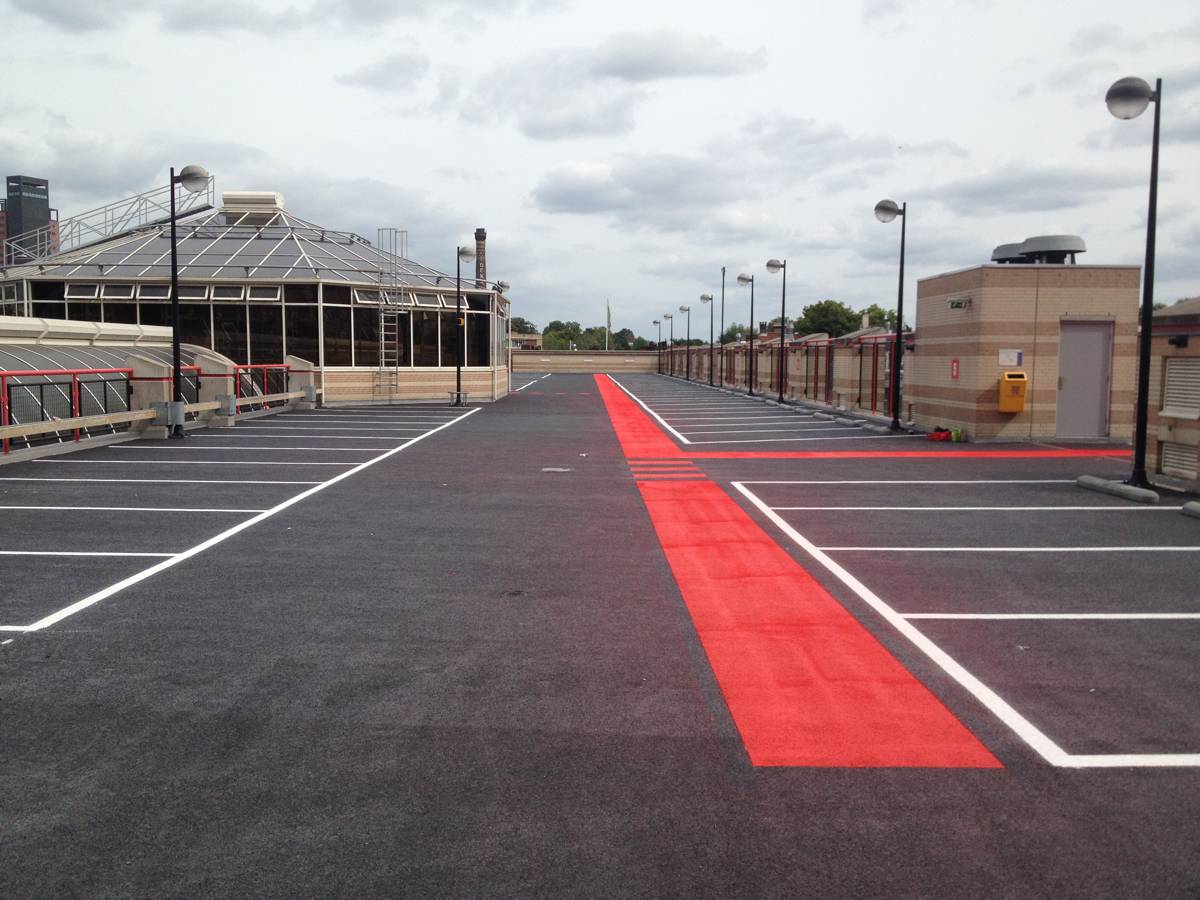
When are liquid waterproofing systems used?
Apart from sites that do not allow the use of a flame during application, liquid waterproofing systems are used when traditional waterproofing membranes are difficult to install. Often, for structures where a weight restriction applies and additional asphalt layers are not permissible, or where there is limited access or space for equipment. They are quick to apply and rapidly cured after which, the areas can be used directly without requiring additional slabs or paving, which makes it perfect for projects where time is of the essence, such as the refurbishment of car parks that have to remain open.
Waterproofing is often only required on the car park’s top deck or rooftop parking area and not necessarily on the intermediate decks. Unless there is a requirement to integrate car washing valet services. Here, a waterproof surface would prevent water from seeping into the structure, which may cause damage over time.
Liquid waterproofing systems however can be specified depending on performance requirements, such as slip resistance, structural criteria or aesthetic demands like colour or line marking for parking bays, driveways and pedestrian paths. A specialist car park surfacing installer or product manufacturer will offer guidance on the system build-up for a surfacing project.
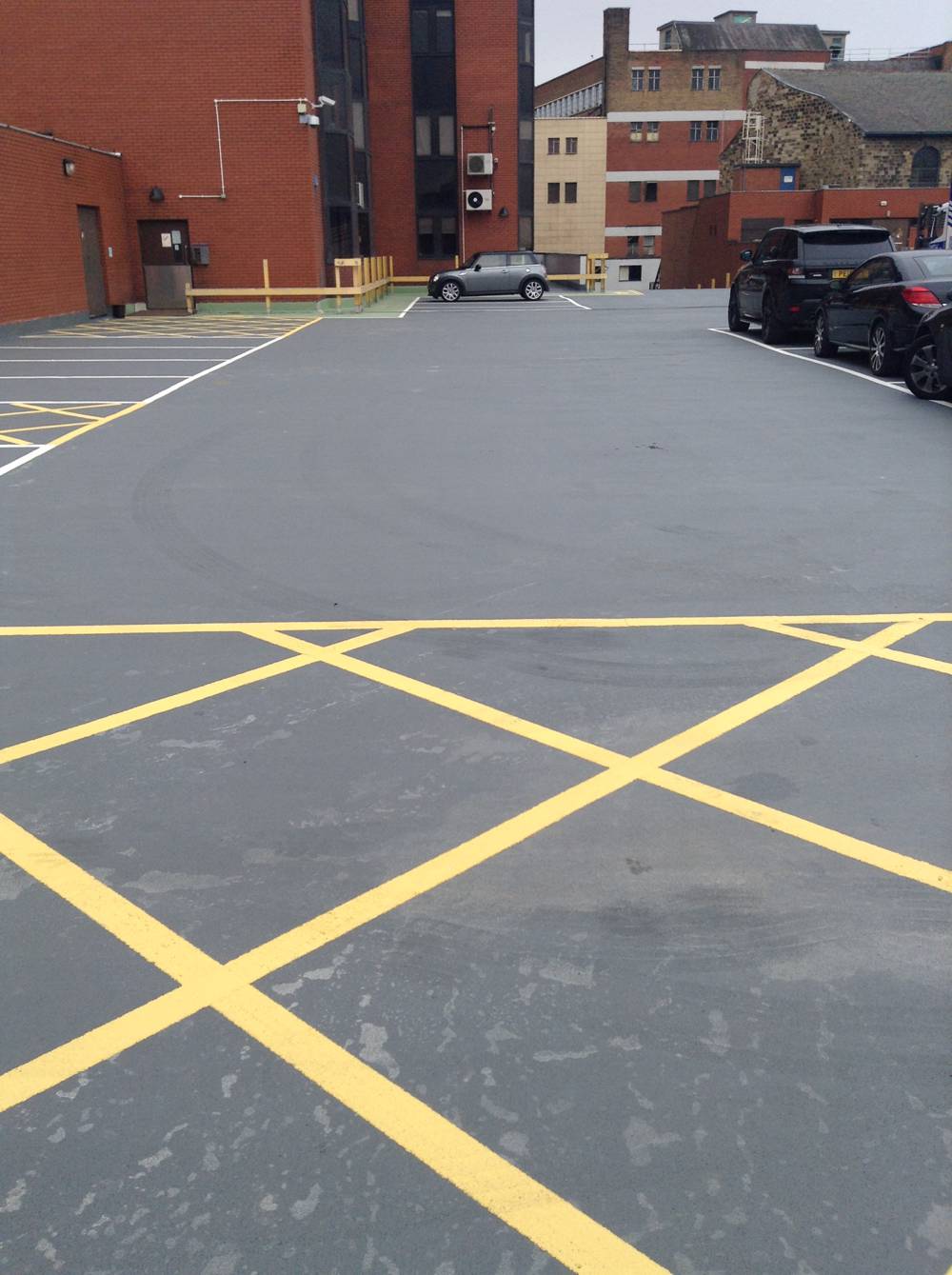
Avoid car park surfacing mistakes from the outset
This is especially the case in car park resurfacing projects. A successful surfacing project boils down to thorough preparation, starting with a survey. Ensure your product manufacturer and contractor have the technical back-up to execute such surveys.
A recent survey conducted by SOPREMA on an existing council-owned multi-storey car park highlighted some critical issues. In this particular case, the top deck was originally an asphalt finish applied using a hot bitumen method. The surface was exposed to stress from the sun’s heat and the constant traffic navigating the ramp and turning, over time, led to a noticeable rippling effect, caused by the asphalt shifting and deforming.
The client enquired whether a new product could simply be applied over the existing surface to rectify the problem. However, this approach is not recommended. Any underlying issues need to be addressed to avoid continued movement and further degradation.
Remedial works before the application of the new waterproofing were recommended with surface preparation including the removal of the damaged asphalt and the repair of structural issues were provided in a thorough report.

Test to achieve a consistent finish
With the right specification and scope of work in place, it’s on to the application. Whether roller-applied or sprayed contractors need to be aware of surface quality and consistency. Always refer to the product’s technical data sheets. These documents specify important parameters such as the required substrate and ambient temperature for application. Ignoring these can result in improper curing – either too fast or too slow.
The liquid waterproofing is a fully bonded system, and its performance is dependent on a firm and thorough bond to a suitably prepared substrate. Regular pull-off bond tests must be performed on the deck in accordance with supplier’s guidelines and prior to installation to demonstrate that minimum bond can be achieved.
The Consumption Rate for the application of the product also needs to be consistent. Consumption depends on the quality and type of substrate so before applying, performing tests is always advisable.
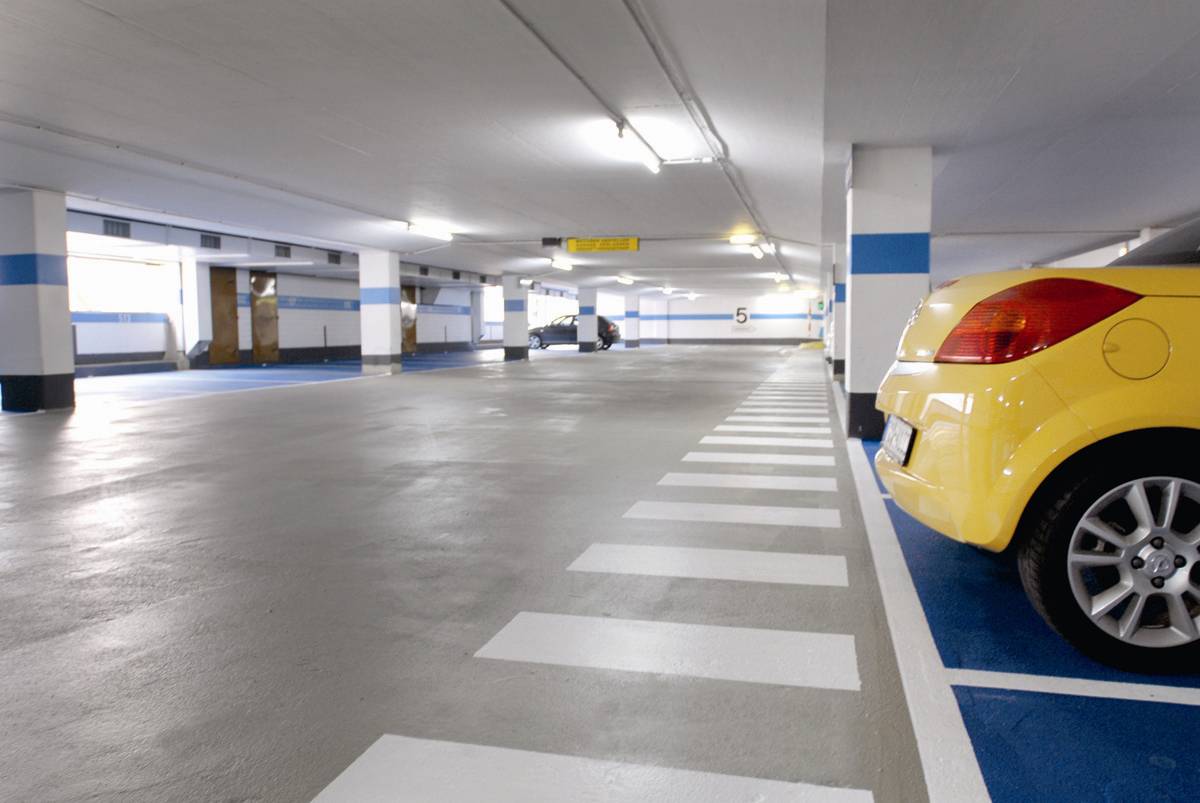
Carefully considered installation
Weather plays a crucial role in the application process too. In the height of summer, contractors can achieve optimal results by working during the cooler night hours or early morning to avoid excessive heat that may affect the curing process. Similarly, to ensure proper adhesion and curing, it is important to plan around rainy conditions. Being proactive and building flexibility into schedules to accommodate changes in the weather will ensure applications proceed smoothly.
Selection of a suitable liquid system is a key factor for successful and timely completion on most projects. An added benefit of PMMA is its ease of application over a wide range of temperatures and humidity. And, with a benefit of no critical overcoating time, it can be applied systematically to suit the project schedule with minimum downtime and a rapid turnaround.
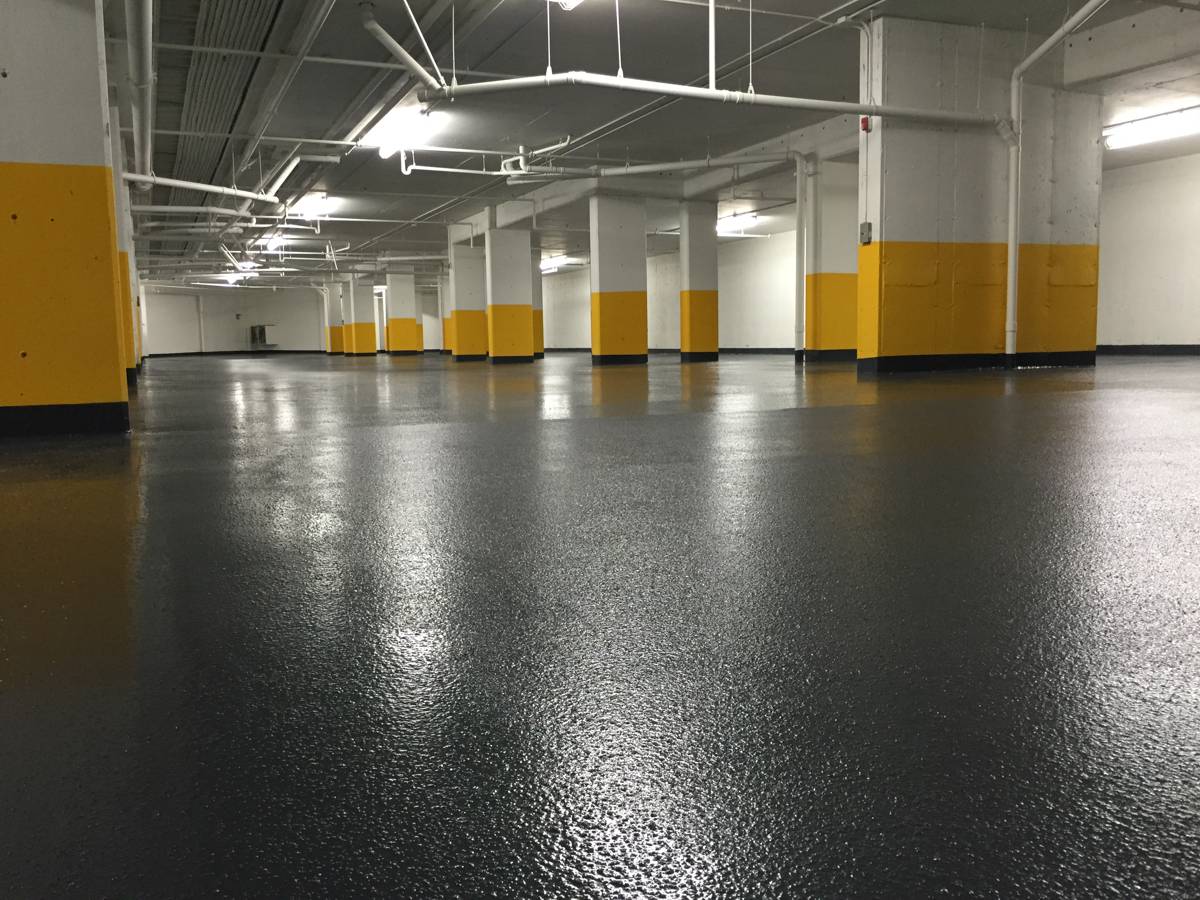
How to ensure longevity
Once the work is complete and the relevant warranty awarded, the process doesn’t end there. Car parks are dynamic environments with high foot and vehicle traffic. Unexpected scenarios and damage can occur. To keep warranties valid, the chain of installation must remain intact. This involves close collaboration between the client, contractor and manufacturer, ensuring that all parties are aligned and involved with the aftercare process. Regular inspections and maintenance will help to identify issues before they escalate.
By focusing on these aspects, car park owners and managers can ensure the longevity and functionality of car park surfacing and a high-quality environment for users.
